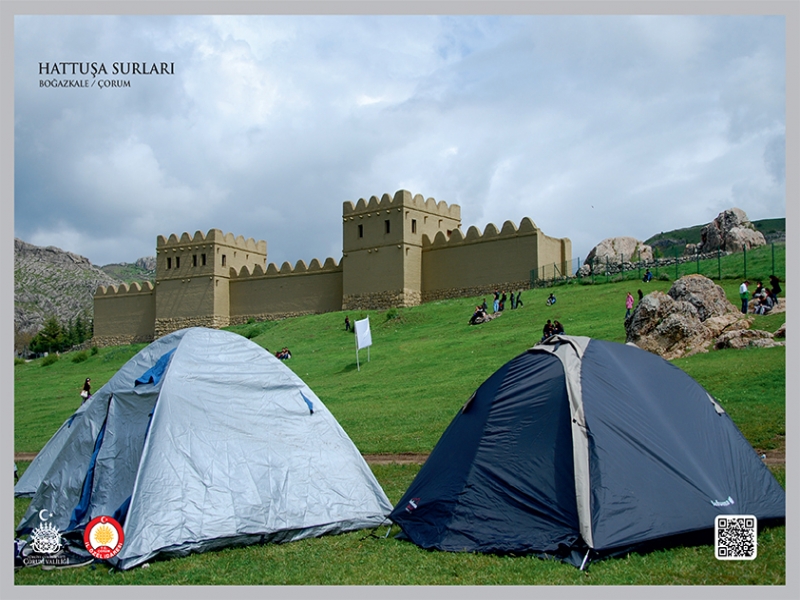
The problem of adobe town surrounding the city of Hattusha was solved between the years 2003-2005. It makes us understand how well the city was protected and what kind of impact does it leave on a person visiting the place with the three 7-8 m-high walls and and 12-13-m tall two towers.The kind of reconstruction with fired adobe bricks was implemented for the first time until then.
The main aim to churn up the architectural work in the capital city of Hattusha, on one hand to present it to the visitor the way they could understand the techncal details and on the other to maket hem see that the architecture was formed of adobe. Since none of the Hittite structures have not been able to survive until the present day, most of the things known and the structures are limited which are ruble foundation and basement. The hittite clay models found during excavations are exclusive. Thanks to these models, we are able to acquire some knowledge about technical details of the appearance and construction of these walls. Based on this fundimental information, 65-meter part of the wall of Hattusha city, whose wall was actually 9 km, was rebuilt.
The reconstruction process done through experimental archeological method, labour force used, the duration of the construction and the amount of materials used have all been documented and made into a book.
For the bricks, mortar and plaster almost 2700 tonnes of adobe soil, around 100 tonnes of chaff and an avarage of 1500 tonnes of water were used. With the measurements 45x45x10 cm, about 34 kg, in ‘hittite sizes’, 64.000 thousands of adobe bricks were produced. With the mixture of loam, chaff and water, they were shaped with the help of wooden moulds. Those bricks were then dried exposed to the sun for about 10 days and became ready to be used.